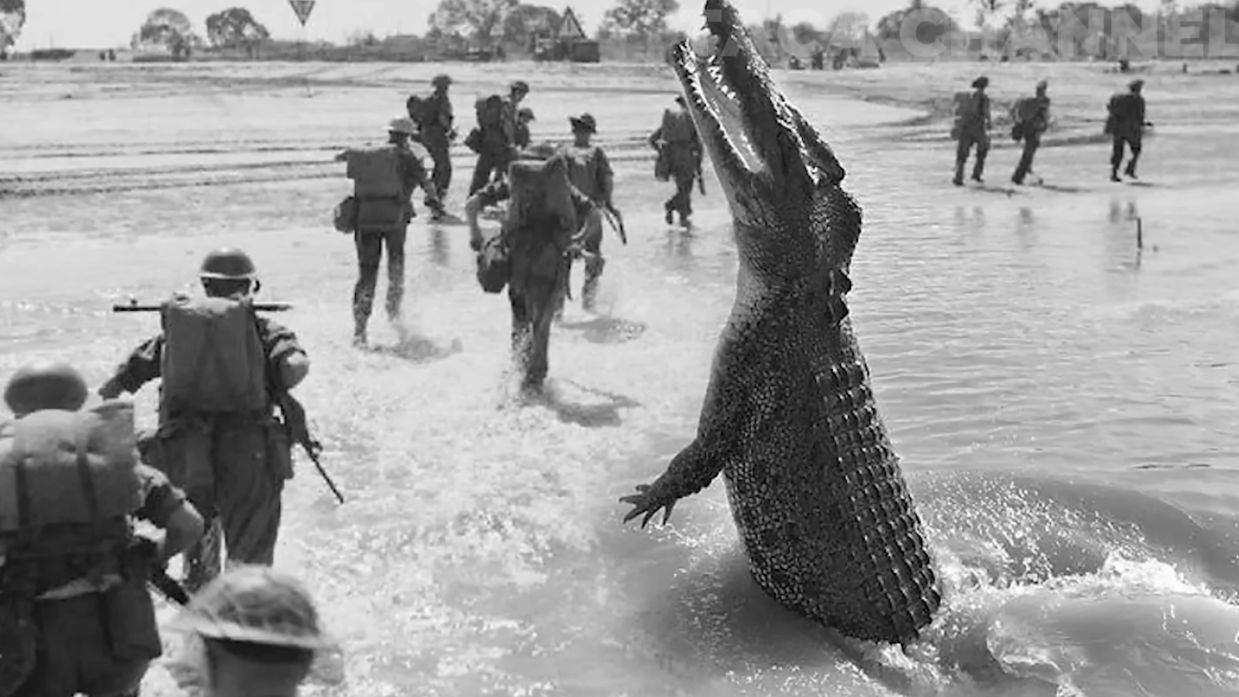With a length of about 8km, the Japanese soldiers were brutally attacked and killed by Ramree crocodiles. In the end, only 20 survived out of 1000 Japanese soldiers. This event is considered one of the largest natural attacks in World War II caused by a wild animal.
1. Wildlife:
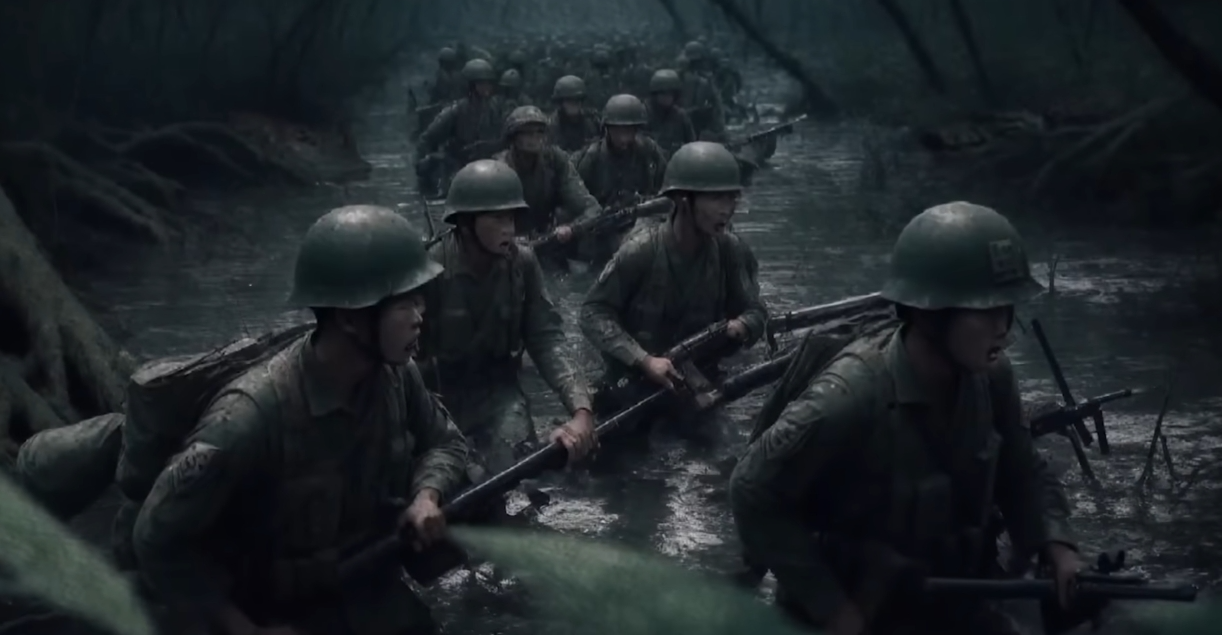
Ramree Island is located off the coast of Rakhine State in Myanmar, in the Bay of Bengal. It became the site of one of the most astonishing massacres in World War II, part of the conflict between Britain and Myanmar during the periods of 1825-1852 and 1885. Myanmar officially became a British colony in 1886, used as a buffer zone between India and the rest of Asia.
However, in 1942, during World War II, the Japanese Empire took control of all of East Asia and Southeast Asia, and Myanmar was no exception. In this context, British forces needed an airbase on Ramree Island to launch an attack against the Japanese. However, thousands of enemy soldiers were fiercely defending the island, leading both sides into a long battle lasting 6 weeks.
Eventually, the Royal British Marines and the Indian Infantry Brigade defeated the Japanese. The coordinated Allied forces isolated about 1000 Japanese soldiers. At this point, the British issued a warning that the isolated group of Japanese soldiers should surrender, but this group decided to undertake a dangerous journey across the flooded mangrove swamps.
This action is considered their most foolish decision. Finally, at midnight on January 29, the Japanese soldiers quietly withdrew from their defensive positions, beginning their deadly journey through the mangrove swamps of Ramree Island. That was when the horrific massacre between humans and wild animals began, with saltwater crocodiles rising in the dark swamps of Ramree.
2. The massacre:
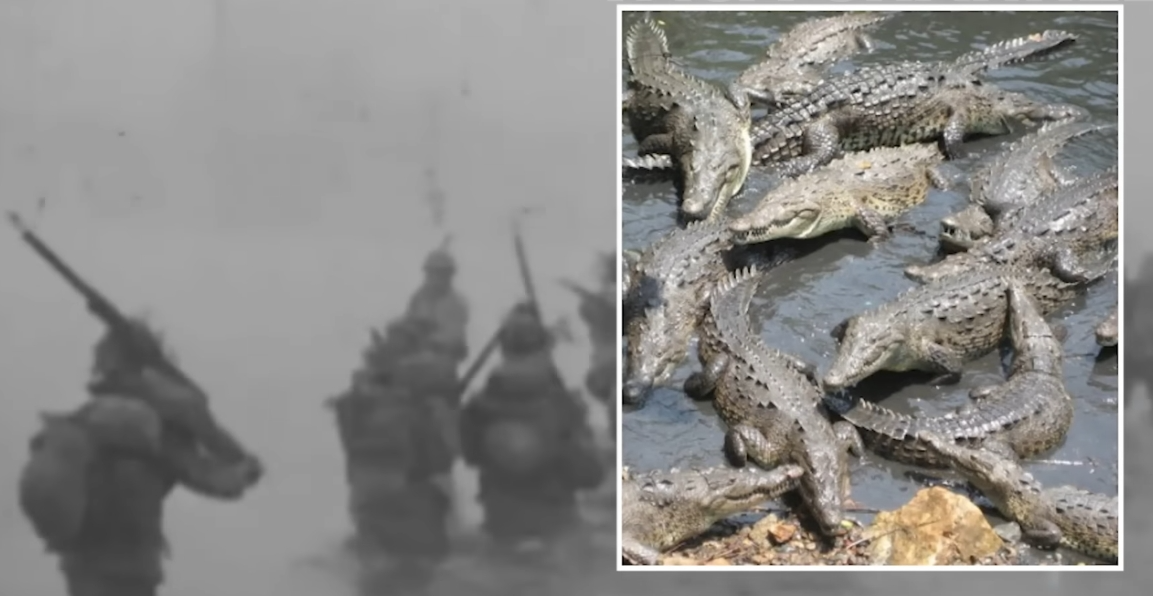
After destroying the cannons by disassembling the firing mechanism to use as weapons, at around 4:00 AM the next day, more than 1000 Japanese soldiers lined up heading south. By noon the next day, over 1000 Japanese soldiers had reached the edge of the swamp, the center of the marsh. They were attacked by thousands of hungry crocodiles and other insects like flies, ticks, snakes, and scorpions. The situation became dire as most of the Japanese soldiers were thirsty due to depleted water supplies, while the water they encountered was salty and undrinkable. Some tried to catch crabs and eat them raw to quench their thirst.
Meanwhile, the Allies destroyed the Japanese soldiers' escape route with British artillery. Below, the muddy ground was too soft to dig trenches, so the Japanese regiment had to expose themselves to the enemy. However, the British had not yet taken decisive action on February 1.
The 121st Japanese regiment first set foot on Ramree Island that night. According to the map, about 8km away, they would encounter another Japanese regiment to the south of the island. By late at night, the regiment was resting on a dry patch next to the forest when they suddenly heard gunfire and screams. About 1km away, the screams and gunfire echoed, as 1000 Japanese soldiers were attacked by the hungry crocodiles living in the Ramree swamp. With nearly half of their bodies submerged in mud, they could not escape, and the only way to protect themselves was to shoot at the crocodiles.
That night was described as the most terrifying night for the Japanese soldiers. The hungry crocodiles were stirred by the sound of footsteps and the smell of human sweat, followed by the scent of blood from the first victims. They plunged into a frenzy in the flooded mangrove swamp. As dusk fell, once again, their feast was laid out before them, with the remains of the bodies being picked apart by birds.
3. Impressions:
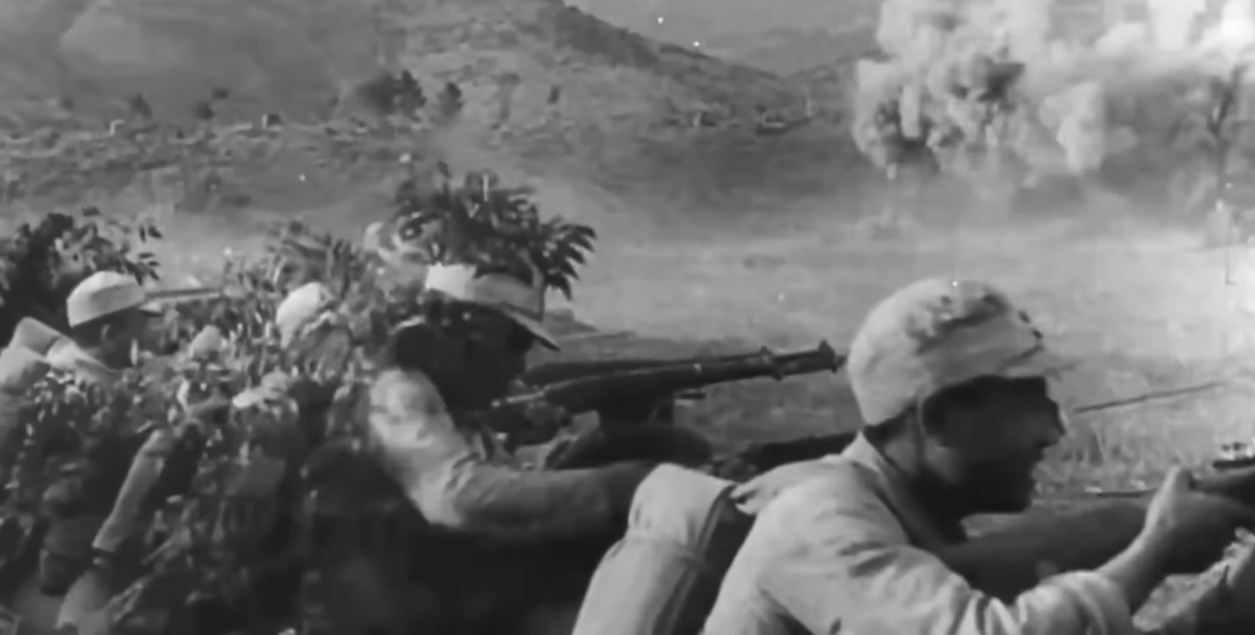
Among the more than 1000 Japanese soldiers who entered the Ramree swamp, only 20 survived. According to Lieutenant Kawabata, in the darkness, he could only sense the loud noises of the animals, which terrified his mind along with the painful screams of the victims and the sound of gunfire. However, the exact number of deaths in the kingdom of crocodiles remains uncertain.
Due to being eaten by crocodiles, questions about the Ramree massacre began just two days after the events in the swamp. Based on the testimony of a British prisoner, the Allied forces then entered the swamp. Earlier that night, gunfire and screams had echoed. Lieutenant J. Carwell of the assault team called for artillery to fire destructively, and the British Indian forces fired about 200 rounds into the area. When night fell, the British soldiers only saw many broken water hyacinths and shell fragments, along with the remains of Japanese soldiers missing parts of their bodies. Additionally, the swamp remained silent with dark, murky waters. Occasionally, they would see a crocodile with its head and lifeless eyes rising above the surface. It is very likely that the British artillery bombardment killed many crocodiles as well as Japanese forces, including those that were injured or had died.
The nature of the swamp is to pull heavy objects down below, so only the corpses lying in shallow areas could be found. Some zoologists like Marlin have suggested that the crocodiles "devoured" the entire Japanese contingent. He argued that to consume 1000 people, there must have been between 500 to 600 starving crocodiles in the swamp.
The question arises as to what the crocodiles lived on before that. The ecosystem of the mangrove swamp does not have any animals that could survive after being eaten. What did they eat afterward? Although a crocodile can go without food for 3 to 4 months when full, there has yet to be any excavation or search for remains to confirm that a contingent of Japanese soldiers had perished in the Ramree swamp.
Naturalist Charlon, a lecturer at the University of Oxford, UK, believes that as they passed through the swamp, most of the 1000 Japanese soldiers perished because the swamp was quite deep, with some areas reaching 4 meters deep. Under the weight of their bodies, along with weapons and equipment, they were pulled down to the bottom. When the tide rose, the water erased all traces. It is also possible that some were eaten by crocodiles, as there were several bodies missing parts. Regarding the gunfire and screams, perhaps the soldiers were shooting and their cries were for help, as in the darkness, they did not dare to shoot around for fear of hitting their own men.
The Ramree massacre is believed to have been caused by saltwater crocodiles, still a question mark. The terrifying story on Ramree Island has become a tragedy of World War II, reminding humanity of the brutality of war and the harshness of nature.
In early 1945, during the final stages of World War II, Ramree Island off the coast of Myanmar became a picture of brutality and horror. This was the site of one of the worst tragedies in military history - the massacre where more than 1000 Japanese soldiers were eaten by crocodiles.
4. Causes:
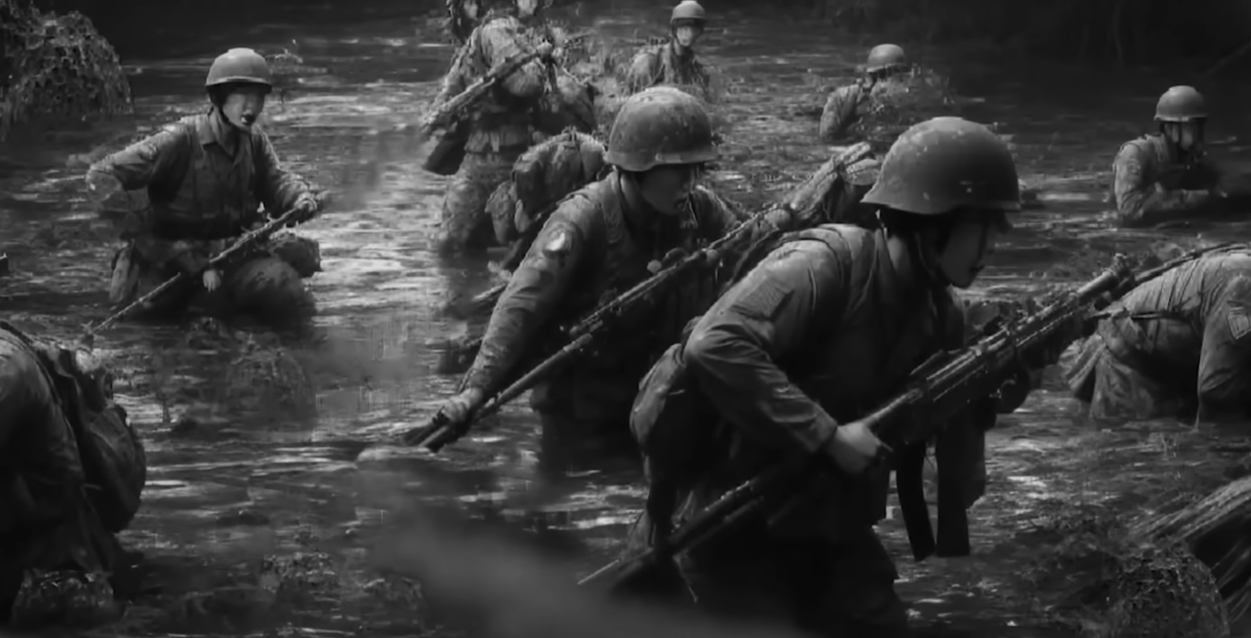
The main cause of this massacre can be explained through a horrifying combination of natural and man-made factors. To better understand how 1000 Japanese soldiers met their tragic fate, we need to delve into the causes and the unfolding of this terrifying event.
One of the main factors is the natural habitat of Ramree Island. The mangrove swamp here is an ideal habitat for saltwater crocodiles, the largest reptiles in the world. With abundant food sources and no natural enemies, crocodiles thrived and became a nightmare for any creature that entered their territory.
Another factor is the circumstances of war. In an effort to gain control of Southeast Asia, the Japanese military occupied Ramree Island as a strategic base. However, the resilience of the Allied forces forced them to retreat into the mangrove swamps, an environment they could not control or predict.
In early 1945, Allied forces, including British and Indian troops, began their attack against the Japanese on Ramree Island. In an attempt to find an escape route, over 1000 Japanese soldiers tried to cross the swamp, unaware that they were walking into a terrifying natural trap.
The Allied attack caused the crocodiles in the swamp to explode, seeking food during the storm, which were the humans they encountered. With hundreds of hungry crocodiles, nothing stopped them from hunting. Furthermore, the chaos of war made it impossible for the Japanese soldiers to reorganize, making them easy targets for the ferocious crocodiles.
Finally, some believe that the Allies used artillery to destroy the crocodiles, causing them to panic and attack everything in their sight. The combination of these factors created a brutal and terrifying scene, where hundreds of Japanese soldiers died under the bites of bloodthirsty crocodiles.
However, there is still much debate about the specific details of this massacre. Some believe that there may have been other factors contributing to this event, but it cannot be denied that the combination of war and the natural environment created a terrifying scene from which 1000 Japanese soldiers could not escape. It is one of the most heartbreaking pages in the history of war, a testament to the brutal power of nature and the savagery of humanity in the context of war.
